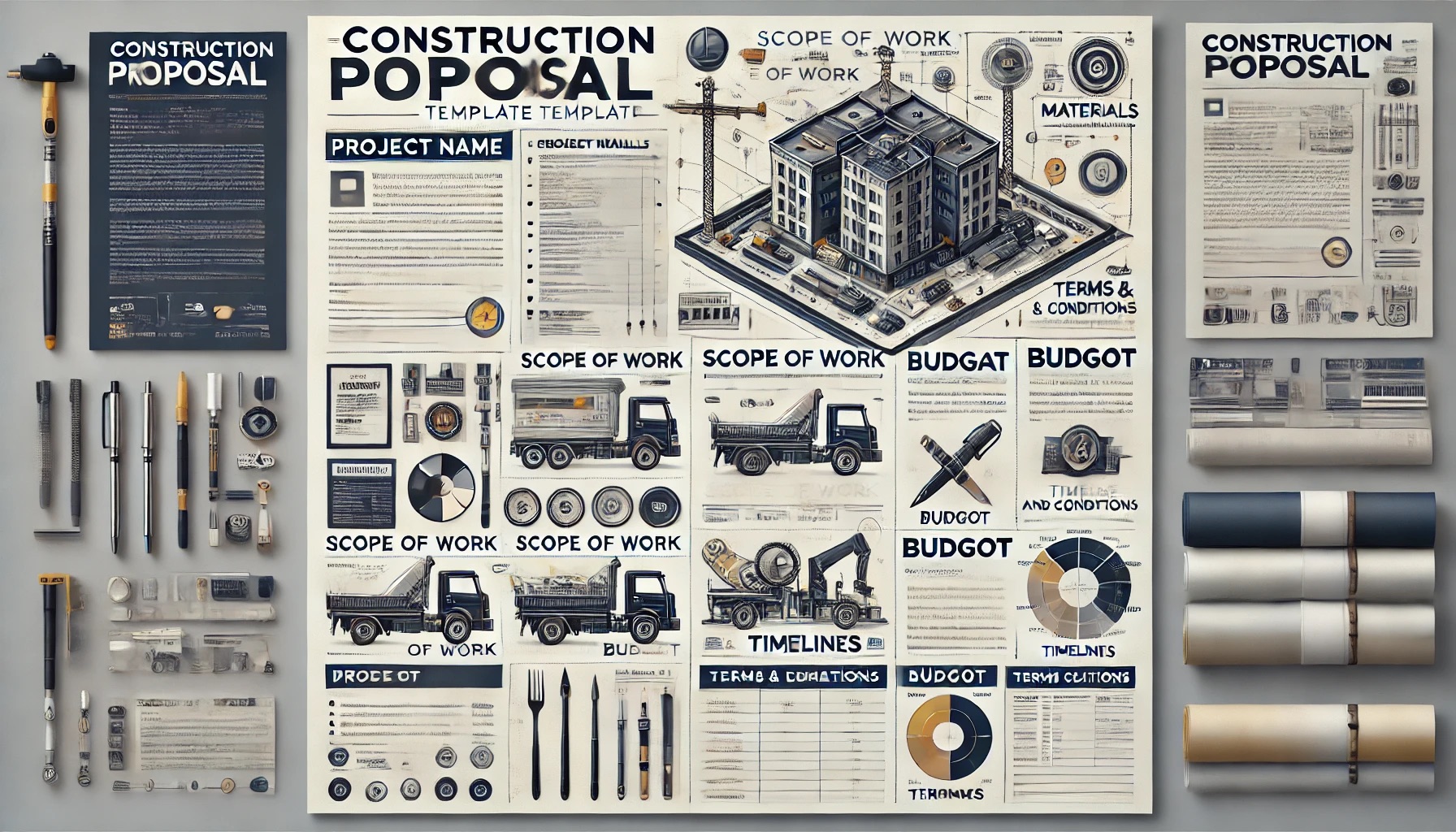In the competitive world of construction, a well-crafted proposal can be the key to winning bids and securing lucrative projects. A construction proposal serves as a comprehensive document that outlines the scope of the project, costs, schedules, and terms, providing clients with all the details they need to make informed decisions. For contractors, it is more than just a formality—it's a vital tool for showcasing expertise, ensuring transparency, and protecting against future disputes.
This guide will walk you through the essentials of creating an effective construction proposal template, why it's important, and how to craft one that meets industry standards and client expectations.

What Is a Construction Proposal?
A construction proposal is a document used in the bidding process to present detailed information about a project to potential clients. It outlines the contractor's plans, estimated costs, timeline, and terms, serving as both a pitch and a preliminary contract.
Unlike a simple bid, a construction proposal delves deeper into project specifics, showcasing professionalism and helping avoid misunderstandings. It acts as:
- A sales and marketing tool to highlight the contractor's capabilities.
- A legal document outlining responsibilities and expectations.
- A communication framework for tracking progress and resolving disputes.
A well-prepared construction proposal ensures both parties have a clear understanding of the project, from start to finish.
Why Is a Construction Proposal Important?
1. Establishes Clear Expectations
A detailed proposal eliminates ambiguity by clearly defining the scope of work, costs, and timelines, reducing the risk of disputes.
2. Builds Credibility
A professionally designed proposal showcases your expertise, experience, and attention to detail, helping you stand out from competitors.
3. Enhances Transparency
By specifying every detail, including materials, labor, and payment terms, a proposal fosters trust and collaboration.
4. Serves as Legal Protection
In case of disagreements, the signed proposal acts as a legally binding document outlining both parties' obligations.
5. Improves Project Management
A well-structured proposal provides a roadmap for managing resources, timelines, and milestones effectively.
Key Elements of a Construction Proposal
To craft a winning proposal, ensure it includes the following components:
1. Basic Information
Clearly state the names, addresses, and contact details of all parties involved. Include a section for signatures to make the document legally binding.
2. Scope of Work
Provide a detailed description of the tasks to be completed, the quality of materials, and the standards to be met. This section sets client expectations and defines project deliverables.
3. Cost Estimates and Payment Terms
Break down costs into categories such as labor, materials, permits, and equipment. Clearly outline payment schedules, methods, and penalties for late payments.
4. Project Timeline
Include start and end dates, major milestones, and contingencies for delays. Specify whether deadlines are based on working days or calendar days.
5. Relevant Authorities
Identify key decision-makers for each stage of the project and outline their responsibilities. This prevents confusion and ensures accountability.
6. Terms and Conditions
Include clauses covering changes in scope, unforeseen delays, warranties, and dispute resolution to protect both parties' interests.
How to Create the Best Construction Proposal Template
Follow these steps to create a template that is both professional and practical:
Step 1: Gather Client Information
Collect details about the client and project, including contact information, site location, and any special requirements.
Step 2: Define the Scope of Work
Collaborate with your team to outline the specific tasks and services involved. Use precise language to avoid ambiguity.
Step 3: Break Down Costs
List all costs associated with the project, providing a transparent breakdown. Include:
- Labor
- Materials
- Equipment
- Permits and inspections
- Contingency costs
Step 4: Establish a Timeline
Work backward from the project's deadline to create a realistic schedule. Account for potential delays and include milestones for tracking progress.
Step 5: Detail Payment Terms
Specify:
- The total project cost
- Deposit requirements
- Payment schedules (e.g., upon milestones or completion)
- Accepted payment methods
Step 6: Include Terms and Conditions
Protect your business by including clauses for:
- Change orders
- Warranties
- Indemnification
- Force majeure
Step 7: Use Professional Software
Leverage tools like Microsoft Word or Excel to design your template. These programs allow for customization and easy updates.
Ready-to-Use Construction Proposal Templates
If starting from scratch feels overwhelming, use these pre-made templates as a foundation:
1. General Construction Proposal Template
A versatile option for various projects, this template includes sections for client details, scope, costs, and timelines.
2. Residential Construction Proposal Template
Tailored for home construction or renovation projects, it includes fields for architectural plans, materials, and client preferences.
3. Commercial Construction Proposal Template
Designed for large-scale projects, this template highlights schedules, resources, and compliance with industry standards.
4. Materials and Labor Template
Focuses on itemizing materials and labor costs, ideal for transparency and budget tracking.
5. Simple Proposal Template
A basic, easy-to-use format for smaller projects, including essential fields for scope, costs, and signatures.
You can download these templates from reputable sources like Smartsheet and TemplateLab.
Tools for Crafting a Construction Proposal
While specialized project management tools are available, Microsoft Office remains a reliable and accessible choice. Programs like Word and Excel allow for:
- Easy customization
- Professional formatting
- Integration with other business documents
If you don’t have access to Microsoft Office, consider purchasing a key from platforms like RoyalCDKeys at an affordable price.
Key Takeaways
Creating a construction proposal is more than just a formality; it’s a critical step in securing projects and building client trust. By following the steps outlined above and leveraging templates, you can streamline the proposal process, improve project management, and enhance client satisfaction.
A well-crafted proposal not only boosts your chances of winning bids but also lays the groundwork for successful project execution. Invest time in creating a detailed, professional proposal, and watch your construction business grow.
Source: How to Make The Best Construction Proposal Template
Be sure to read our current article: Workload Management: Boost Well-Being & Productivity